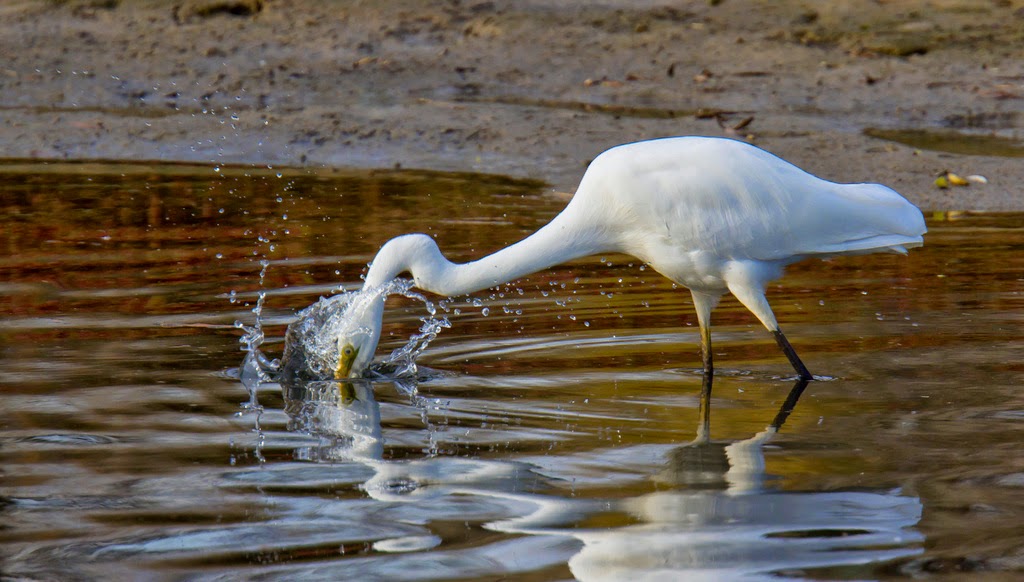
The rasping call of the Satin Flycatcher, resonating through woodland and forest is, for me, one of the most anticipated birding events of every spring. "Satins" are one of the last of the summer migrants to arrive in Tasmania and among the first to leave. Being almost exclusively insect eaters and given the unpredictability of our summers, especially so this year, that's probably a wise move.
Although they can be very vocal and their calls may be heard a kilometre or more away on a still day, they can be surprisingly difficult to locate. Largely occupying the tree canopy and being only around 170mm in length doesn't help and males often call and move and call and move, making it a somewhat fraught business. They are of course proclaiming their territory, and several pairs may occupy adjacent areas, and occasionally disputes break out between males. Mostly this is just a verbal joust, with crest raising and the characteristic tail vibrating and occasionally followed by chasing. So I feel fortunate to occasionally manage a close encounter with these birds and the accompanying images are the result of one of these occasions.

I stood at the top of a small shallow valley, a favourite spot of mine, giving views into the canopy of the small peppermints. Almost immediately two male Satin Flycatchers shot past, one either side of me no more than a few centimetres away. One returned quickly (in triumph?) and perched just behind and above me. I didn't need to turn and confirm the ID, the vibrating tail apparent in the cast shadow said it all.
For the next 40 minutes or so, I watched the antics of one, sometimes two, family groups of "satins" as they went about the business of catching insects to feed their offspring. The most surprising events were their fearless defence of the young. I watched as Grey Shrike-thrush and Yellow-throated Honeyeaters were seen off, both of these species themselves, quite pugnacious. Others seen off included Black-faced Cuckoo-shrikes, a Fan-tailed Cuckoo, Black-headed Honeyeaters and Dusky Robins. The male "satin" (below) with an evil look in his eye, (if only looks could kill!) ambushed a shrike-thrush, physically attacking it and chasing it high into the top of a dead gum over 100 metres away.
.jpg)
But this pales compared to the combined efforts by two males, who took on an juvenile Grey Currawong. Unseen by the "satins", an adult and juvenile currawong had landed in the Native Cherry alongside me and all was well until the juvenile flew down to pick up a "cherry". It was instantly spotted and a spirited attack by two males ensued, which included landing on the unfortunate bird and pecking it vigorously. The young currawong seemed nonplussed by the event and just allowed the attack to continue before beating a retreat pursued by the males. The adult currawong wisely stayed concealed in the dense foliage of the cherry and flew off when it appeared safe to do so!
In between seeing off the interlopers, I watched both males and females catching insects, mostly in mid-air, but occasionally from the woodland floor. The male pictured above with an insect (love to know what insect) at one point dropped it, and the flycatcher showed great agility in recapturing it before it had fallen a metre. Only one bird managed to avoid being seen off, a Shining Bronze-Cuckoo. The flycatcher had passed within a metre or so of it several times without event. Although the cuckoo was only about 20 metres away and straight in front of me, I had failed to notice it until it briefly moved to pluck a hairy caterpillar from a nearby leaf. Perhaps its' cryptic colouring kept it 'safe', or perhaps the flycatcher didn't see it as a threat.

Watching from close quarters these highly animated flycatchers going about their business was an experience up there with the best. What a privilege!
On and off during the last few months I have followed the several pairs that occupy Pilcher's Hill Reserve at Gielston Bay on Hobart's Eastern Shore. My visits have made me painfully aware just how little I know about these flycatchers, and as always, every piece of information gathered leads to even more questions. I had, for example never seen a juvenile (image at right) and didn't realise how rapidly they moult through the various plumage states (I'm still not sure I fully understand this). Do some males arrive in immature plumage--basically the same as female plumage (top left)--and change during the summer to full male state? I photographed two males that were still showing remnants of immature plumage in early January.

Satin Flycatchers are found widely in the taller, often wetter, eucalypt forests and my
impression is that they have increased in numbers over the past several
years. My reason for thinking this is that, at least in the south-east,
they now occupy areas not previously used, such as more open and drier woodland
with only modestly tall trees. Such impressions can be misleading as
I've noted this year that I've seen many more Flame Robins and an apparent "crash" in Scarlet Robin numbers. Swings and roundabouts? Time
will tell.
Around the Hobart area "Satins" may be found (or at least heard!) in
most of the reserves, such as the Waterworks Reserve, lower areas of
Mtn. Wellington Park, Risdon Brook Park and the Meehan Range and other
areas of similar habitat.











.jpg)
















